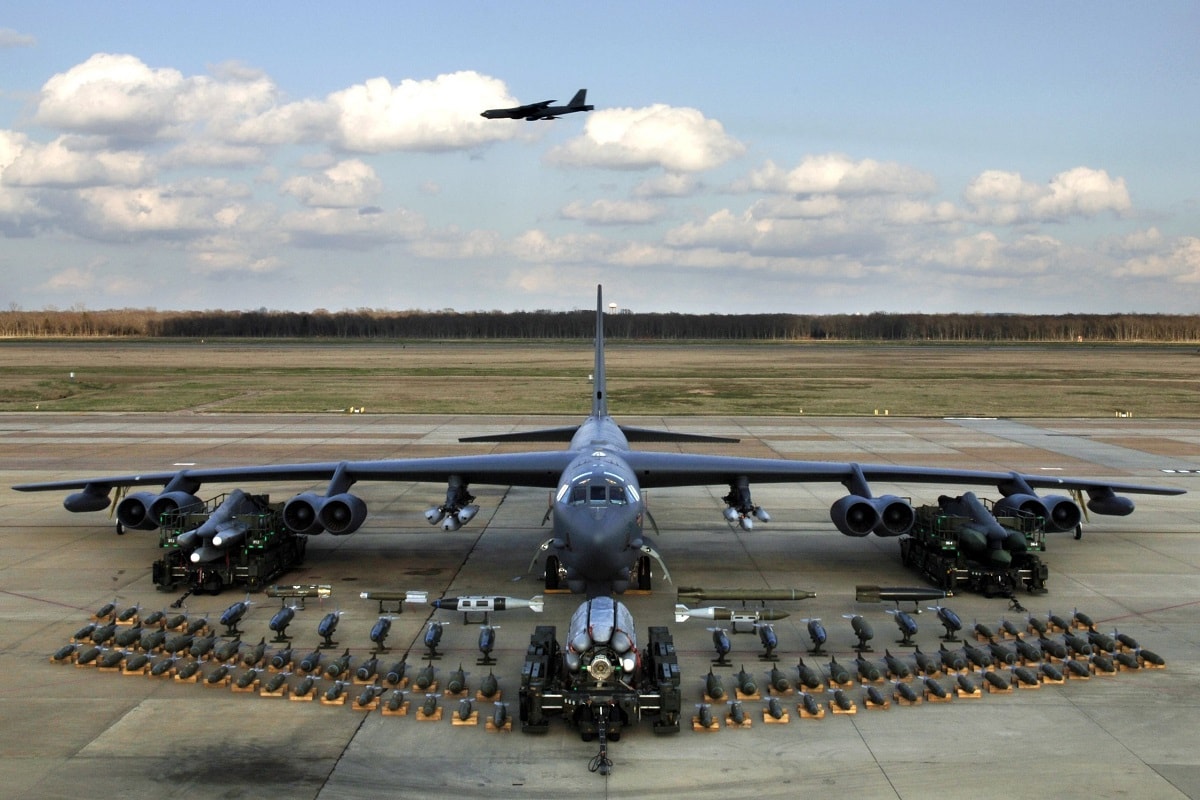When Will the B-52 Be Able to Launch Hypersonic Missiles? There have already been good and bad tests for a path-breaking hypersonic missile and the B-52 is proving its mettle once again as a platform for new weapons. The U.S. Air Force wants a testbed and an eventual aerial launchpad for hypersonic missiles. The B-52 Stratofortress has been picked to fill this role, but the Air Force has a long way to go – both in hypersonic missile development and deploying them on the B-52.
The B-52 Is Still Reliable
The B-52 is showing little signs of age. And that is remarkable.
Even though final production ended in 1962, there are still 58 B-52H airplanes in service. Amazingly, it will reportedly fly into the 2040s. That’s good because by then the Air Force hopes that B-52s will carry nuclear-tipped hypersonics as standard ordnance.
B-52s and Hypersonic Missiles: The Right Dance Partners?
But the B-52 has its work cut out for it when used as a delivery system for a new hypersonic weapon.
In April of this year, the Air Force had a setback with its testing program for the B-52 and hypersonics. The AGM-183A Air-launched Rapid Response Weapon, a hypersonic missile from Lockheed Martin, was supposed to launch from the wing of a B-52, but when the test was initiated, nothing happened. The incident occurred over the Pacific Ocean and after the failure, the airplane returned to Edwards Air Force Base.
The government has already invested $480 million in the AGM-183A program, and it is on a critical path to keep up with Russia and China. It is supposed to be ready by the end of FY22.
A Simulated Test Is Successful
A follow-up test occurred in May and the Air Force received better news. The branch tried a different type of “kill chain” test in which the B-52 took off from Barksdale Air Force Base, Louisiana, and flew to Alaska for Northern Edge 21, a joint training exercise. This was a simulated fire mission for a hypersonic missile.
The idea behind the test was to examine whether the B-52 could exercise the data links for a kill chain loop – meaning whether a beyond-line-of-sight launch sequence could be synchronized from the ground to the air. The simulation worked and the Air Force gathered significant amounts of data.
Then the Engine on the Hypersonic Missile Doesn’t Fire
But simulations are one thing, actual hypersonic missile launches are another.
The Air Force received bad news in July of this year when the AGM-183A failed to ignite its engines over Point Mugu Sea Range near southern California. There was successful separation but no propulsion activity. But at least the missile left the wing, in April the hypersonic weapon didn’t budge.
Again, the Air Force and Lockheed engineers looked on the bright side and said they gathered valuable data, even though the engine failed.
Delays Can Mean Budget Cuts
The Air Force and Lockheed Martin are burning uptime. The House Appropriations Committee has already proposed to trim the amount of money it will spend on 12 AGM-183A hypersonics by $44 million on concerns the program will have delays and other technical problems. If that budget cut happens, the Air Force can only afford to buy eight missiles.
What Happens Next?
The pressure is on as Russia and China blast ahead with their hypersonic weapons programs. The good news is that the AGM-183A is separating from the wing, so that likely shows the B-52 should be the proper testbed. Now is the time to go full speed ahead and ensure this program is successful considering Russia and China’s well-publicized and successful hypersonic missile tests.
Here is hoping that 2022 will be the year the Air Force and Lockheed Martin string together a series of their own positive hypersonic missile headlines. The good news is that both have the clear track records to make that happen.
Now serving as 1945’s Defense and National Security Editor, Brent M. Eastwood, PhD, is the author of Humans, Machines, and Data: Future Trends in Warfare. He is an Emerging Threats expert and former U.S. Army Infantry officer.

